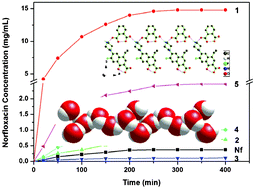Norfloxacin salts with benzenedicarboxylic acids: charge-assisted hydrogen-bonding recognition and solubility regulation†
Abstract
The

* Corresponding authors
a
Key Laboratory of Fine Petrochemical Technology, Changzhou University, Changzhou 213164, P. R. China
E-mail:
chenqunjpu@yahoo.com
Fax: +86-519-86330251
Tel: +86-519-86330251
b
School of Pharmaceutical Engineering & Life Science, Changzhou University, Changzhou 213164, P. R. China
E-mail:
drugs@vip.sina.com
c
College of Chemistry, Tianjin Key Laboratory of Structure and Performance for Functional Molecules, MOE Key Laboratory of Inorganic–Organic Hybrid Functional Material Chemistry, Tianjin Normal University, Tianjin 300387, P. R. China
E-mail:
dumiao@public.tpt.tj.cn
Fax: +86-22-23766556
Tel: +86-22-23766556
The

 Please wait while we load your content...
Something went wrong. Try again?
Please wait while we load your content...
Something went wrong. Try again?
X. Huang, Z. Zhang, Q. Zhang, L. Wang, M. He, Q. Chen, G. Song, L. Wei, F. Wang and M. Du, CrystEngComm, 2013, 15, 6090 DOI: 10.1039/C3CE40567B
To request permission to reproduce material from this article, please go to the Copyright Clearance Center request page.
If you are an author contributing to an RSC publication, you do not need to request permission provided correct acknowledgement is given.
If you are the author of this article, you do not need to request permission to reproduce figures and diagrams provided correct acknowledgement is given. If you want to reproduce the whole article in a third-party publication (excluding your thesis/dissertation for which permission is not required) please go to the Copyright Clearance Center request page.
Read more about how to correctly acknowledge RSC content.
 Fetching data from CrossRef.
Fetching data from CrossRef.
This may take some time to load.
Loading related content
